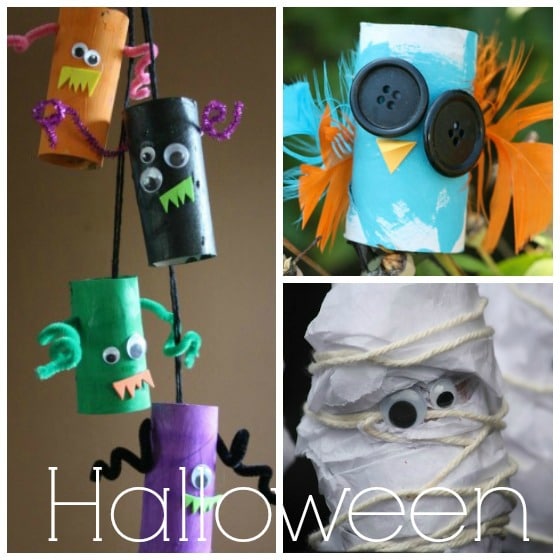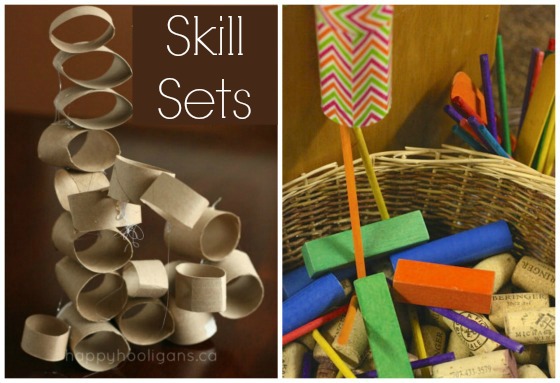We all know they are everywhere! So, why not make a creative use out of them? Parents are always looking to use regular household products to create inexpensive, fun and entertaining projects for their children. Thanks to our good friends over at Happy Hooligans we have found this list of 22 ways to use these otherwise disposable products!
22 Things to Make with Cardboard Tubes:
Click on the highlighted descriptions to see a full tutorial for each craft or activity.
 Fall Decorations with Cardboard Tubes:
Fall Decorations with Cardboard Tubes:
Use a cool paint process to make some fall napkin rings.
Make a turkey table topper for your Thanksgiving table.
Round up some fabric scraps and a few crafty odds and ends for some adorable toilet roll owls.
 Crafting for Halloween:
Crafting for Halloween:
The kids will love making a quirky monster mobile out of cardboard rolls.
A spooky crow or owl is a very fitting decoration for Halloween.
Our toilet roll mummies help little ones develop their winding and wrapping skills.
 Winter Toilet Roll Crafts:
Winter Toilet Roll Crafts:
These cardboard roll snowmen are just the cutest little things, aren’t they?

The hooligans LOVE playing with our toilet roll Nativity set.
 Cardboard Roll Christmas Crafts:
Cardboard Roll Christmas Crafts:
Fleece, batting and a cardboard roll makes an adorable Santa Claus.
Make a set of cute reindeer ornaments for your Christmas tree.

This snowman ornament would be great for the tree or as a gift topper.
 Spring Crafts:
Spring Crafts:
Summons up some April showers with a colourful rain stick.
These Easter chicks in paper nests are just too sweet.
Peeps! Everyone loves Easter peeps, right?
And don’t forget about the Easter bunnies! Check out our paint chip bunting too!
 Bracelets and Cuffs:
Bracelets and Cuffs:
Make some simple toilet roll cuff bracelets.
Anklets can be made using cardboard rolls and colourful duct tape.
 Skill Building Activities:
Skill Building Activities:
Make some cool 3-D structures with tubes and a low-temp glue gun.
Toddlers love to drop things through our cardboard Drop Zone.
 Arts and Crafts:
Arts and Crafts:
Create a unique piece of art for a kid’s room, toy room or classroom.
Turn a long cardboard tube into a torch.
 Cardboard Tubes for Play:
Cardboard Tubes for Play:
In a pinch, a sturdy kitchen roll, makes an excellent bubble wand.
Make a set of simple “stand up” paper dolls.
Well? What do you think? Did we inspire you? Now, it’s your turn to inspire me! If you have a favourite cardboard roll craft or activity, I’d love to hear about it!
Now, I’ll bet you’re wondering how you can re-use all those Keurig K-cups you have stashed too! Don’t worry! We’ve got you covered: 25 Ways to Re-use Your K-cup pods.

 Fall Decorations with Cardboard Tubes:
Fall Decorations with Cardboard Tubes: Crafting for Halloween:
Crafting for Halloween: Winter Toilet Roll Crafts:
Winter Toilet Roll Crafts: Cardboard Roll Christmas Crafts:
Cardboard Roll Christmas Crafts: Spring Crafts:
Spring Crafts: Bracelets and Cuffs:
Bracelets and Cuffs: Skill Building Activities:
Skill Building Activities: Arts and Crafts:
Arts and Crafts: Cardboard Tubes for Play:
Cardboard Tubes for Play:




















